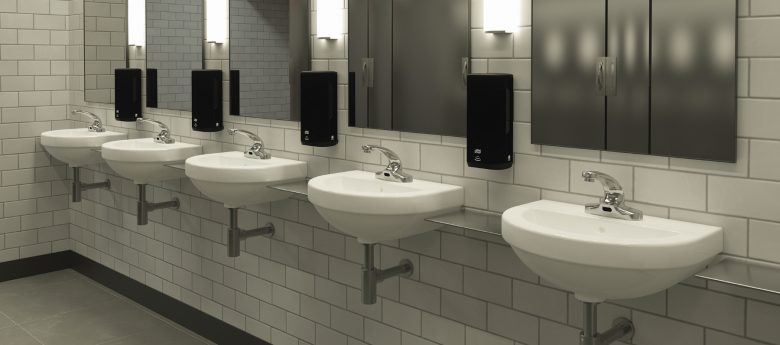Getting the Most Life From Your Faucets

Repair. Replace. Repair. Replace. Facing this unrelenting cycle with your facility’s plumbing fixtures can be exhausting.
Reducing the constant churn of faucet repair and replacement starts at the beginning, with selecting the right fixtures for the job, and continues through proper installation to ongoing maintenance.
This quick guide helps you get the most life from faucets by answering questions about the issues that are most likely to cause headaches or lead to more maintenance demands.
Q: For starters, what should I look for in a faucet for my facility?
A: The most significant factor influencing fixture life is initial quality. Durable fixtures that are designed to withstand the heavy use and occasional abuse they’ll be subjected to in high-traffic environments are more likely to last.
Q: What are some of the faucet features I should seek?
A: The first basic choice is between manual and sensor faucets. Sensor faucets are the most commonly preferred option in restrooms and other public spaces because of their clean, hands-free operations.
But some facilities, like schools, may prefer a manual faucet that’s less likely to tempt students into vandalism like trying to scratch away the sensor eye. In that environment, a metering faucet may be a good choice because the faucet can’t be turned on and left to run.
For facilities selecting sensor faucets, choose between above-deck and below-deck configurations. Below-deck options hide the electronics and provide a more compact presence; above-deck versions provide easier access to batteries for replacement.
Consider a hydrogenerator or hardwire option to eliminate periodic battery changes, further reducing maintenance needs.
Other considerations include function or features that equip the facility to adapt to changing needs and thus are more likely to reduce the demand for updates or replacement. Are the fixtures ADA-compliant? Do they meet (or exceed) current sustainability goals?
Choose, for example, a faucet with vandal-resistant aerators to avoid malicious or misguided removal of aerators and keep water flow in check right from the beginning.
Q: How long should I expect my faucet to last?
A: With routine maintenance, a high-quality manual faucet can last about 20 years, and sensor faucets have about a 10-year lifespan.
Q: What preventive maintenance do my faucets need?
A: For manual faucets, facility managers should routinely flush the aerators to remove any debris that has accumulated and replace cartridges if they start to fail. Cut down on maintenance by choosing ceramic cartridges with a lifetime warranty.
Sensor faucets will need regular battery changes if they are battery-operated and require the debris filter to be cleaned periodically.
Q: Are there common mistakes that I should avoid in selecting or installing faucets?
A: In manual faucets, ensure the selected cartridge is appropriate for the application. If the water in the area is sandy or silty, it’s best to use compression cartridges. In all other cases, ceramic cartridges are the preferred choice for their long-lasting performance.
For sensor faucets, installers should ensure the sensor range is adjusted properly to provide expected, reliable function for users.
Installers and maintenance personnel need to be aware whether the sensor faucet has an auto-purge function and if it is on. If so, the faucet will run for 30 seconds after every 12 hours of inactivity in order to prevent stagnation in the water lines. If facility managers do not know about this feature, they may assume a faulty faucet.
Some sensor faucets may also enter a “sleep mode” to conserve battery life if they are not used for a period of time. If this happens, holding your hands in front of the sensor beam for about 1.5 seconds will reactivate it. Again, facility maintenance personnel should be made aware of this feature so they don’t assume a problem with the faucet.
Q: Is there anything in particular I can do to extend the life of faucets?
A: Always follow the preventive maintenance guidelines set by the manufacturer and monitor for leaks to prevent unnecessary water waste.
David Scelsi is Marketing Product Manager with T&S Brass, a leading manufacturer of commercial plumbing products.
